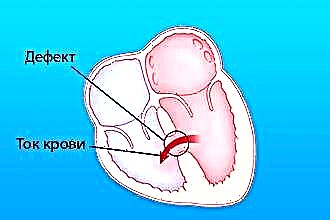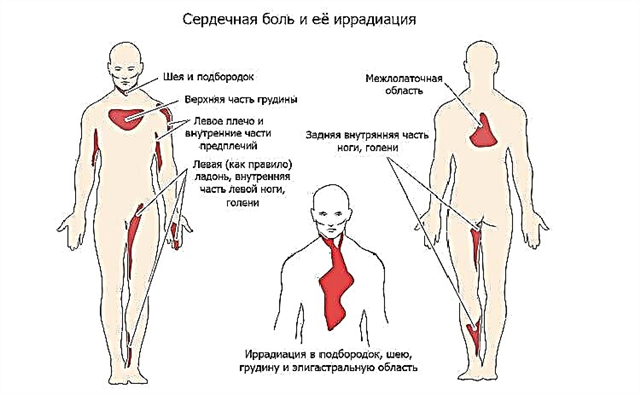Noise that occurs through no fault of an external source is one of the most pressing problems in otiatrics. Physicians in any specialty pay close attention to the characteristics of tinnitus in patient complaints. The description of the subjective sound makes it possible to obtain valuable information for a diagnostic search, to narrow the range of assumptions about probable diseases, and to shorten the list of examinations. Tinnitus can be associated with numerous pathologies, including infectious and inflammatory etiology. Disturbances in the circulatory system are of great importance. You should consider all possible reasons why your ears are squeaking.
Causes
 A squeak in the ear is a high-pitched sound that can appear in various pathologies. To associate it with a specific disease, it is necessary to focus not only on the timbre of the "noise background", but also on the connection with any other symptoms (for example, with dizziness), the duration of preservation. The most likely causes of tinnitus are:
A squeak in the ear is a high-pitched sound that can appear in various pathologies. To associate it with a specific disease, it is necessary to focus not only on the timbre of the "noise background", but also on the connection with any other symptoms (for example, with dizziness), the duration of preservation. The most likely causes of tinnitus are:
- Perceptual (sensorineural) hearing loss.
- Vertebral artery syndrome.
Each of these pathologies is not a separate disease, but stems from a variety of factors.
It cannot be said that any of them has only one reason. At the same time, squeaking in the ears is only part of the clinical picture, and not always the most striking symptom.
Perceptual hearing loss
Perceptual hearing loss is understood as damage to the sound-perceiving structures of the auditory analyzer. A key manifestation is a decrease in hearing acuity up to deafness. This type of hearing loss is also called sensorineural or sensorineural. Squeaking in the ears is just one of the likely characteristics of ear noise, which can also be expressed as hum, ringing, thumping.
Why is it squeaking in my ear? Perceptual hearing loss is a polyetiologic pathology that can be caused by the following factors:
- infection;
- intoxication;
- pathology of the circulatory system;
- degenerative-dystrophic diseases of the spine.
Significant infectious pathologies in the genesis of perceptual hearing loss are:
- Flu.
- Measles.
- Scarlet fever.
- Diphtheria.
- Syphilis.
- Parotitis.
 Substances contained in household chemicals can have a toxic effect. Industrial poisons, overdose or misuse of medicinal substances with ototoxic effects are also dangerous.
Substances contained in household chemicals can have a toxic effect. Industrial poisons, overdose or misuse of medicinal substances with ototoxic effects are also dangerous.
Perceptual hearing loss can be triggered by aminoglycoside antibiotics. Pathological changes in the circulatory system are caused by various diseases (atherosclerosis, hypertension).
Degenerative-dystrophic diseases of the spine include osteochondrosis, spondylosis, etc.
Vertebral artery syndrome
Causes of a squeak in the ear with vertebral (vertebral) artery syndrome:
- spasm of the vertebral artery;
- compression of the vertebral artery;
- Kimmerle anomaly.
Patients who are worried about squeaking in their ears in silence often experience neck pain. Pain syndrome is a manifestation of osteochondrosis, contributing to the formation of a pathological autonomic reflex. There is irritation of the sympathetic nerves responsible for the innervation of the vertebral artery, which causes a persistent long-term spasm.
Muscles and neoplasms can compress the vertebral artery. The compressive effect violates the permeability of the vessel.
Tinnitus and neurological symptoms can be caused not only by vertebral artery syndrome, but also by narrowing of the subclavian artery. The essence of the violations lies in the redistribution of blood flow in the vertebrobasilar system due to a change in the pressure gradient.
With Kimmerle's anomaly, the vertebral artery is displaced. Damage to its wall as a result of contact with the bone creates the prerequisites for the formation of an atherosclerotic plaque, which narrows the lumen of the vessel.
Vertebrobasilar insufficiency can be the cause of the development of perceptual hearing loss.
Noise in children
 Why is it squeaking in a child's ear? A constant squeak in the ears is a reason for examination regarding hearing impairment. The most common cause of hearing damage in children is infection.
Why is it squeaking in a child's ear? A constant squeak in the ears is a reason for examination regarding hearing impairment. The most common cause of hearing damage in children is infection.
However, infectious diseases do not always cause perceptual hearing loss. A squeak can appear with pathologies such as:
- Influenza and other acute respiratory viral infections.
- Allergic rhinitis.
- Acute suppurative otitis media.
A child, especially a small child, cannot always correctly explain his feelings to his parents.
Often, he orients himself in complaints to their leading questions, so the description of tinnitus may be erased. When squeaks in the ear, the child's well-being should be assessed. If signs of a respiratory infection or allergic rhinitis are present, the squeak may be associated with nasal congestion and will subside when normal nasal breathing is restored. Sometimes a squeaking noise is accompanied by acute purulent otitis media in the pre-perforative stage.
Cases of severe infectious diseases require special attention. Parents should be alerted to the appearance of a squeak during the period of vivid clinical manifestations or within several weeks after recovery.
With perceptual hearing loss, squeaks, rings or hums in the ears - these subjective sounds should be described in detail by the attending physician.
Treatment
If it beeps in my ear, what should I do? Self-medication may not be beneficial and may worsen the condition. You should consult with your doctor, who will develop an examination plan depending on the suspected cause of the squeak in your ears.
Treatment should be directed at the underlying disease - this is the only way to effectively deal with tinnitus.
Treatment of perceptual hearing loss is carried out in a hospital or outpatient setting. With a sudden and acute type, urgent hospitalization is required in the department of otolaryngology or neurology. Requires exclusion of contact with noise, cessation of alcohol and smoking. Applicable:
- glucocorticosteroids (dexamethasone);
- agents that improve microcirculation (Pentoxifylline);
- B vitamins, etc.
 In chronic hearing loss, hearing aids are necessary. Squeaking decreases after improving hearing acuity through the hearing aid. In the case of vertebrobasilar insufficiency, after assessing the patient's condition, a decision is made about the need for surgical intervention. Endovascular surgeries are preferred.
In chronic hearing loss, hearing aids are necessary. Squeaking decreases after improving hearing acuity through the hearing aid. In the case of vertebrobasilar insufficiency, after assessing the patient's condition, a decision is made about the need for surgical intervention. Endovascular surgeries are preferred.
Also, drug correction of manifestations of arterial hypertension syndrome (Enalapril, Valsartan) is carried out, treatment of atherosclerosis (Atorvastatin) is prescribed.
Children who are diagnosed with rhinitis or otitis media are shown treatment for the underlying disease. For allergic rhinitis, antihistamines are used; for acute purulent otitis media, broad-spectrum antibiotics are required.



